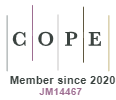Urban forest management tools
DOI:
https://doi.org/10.5585/geas.v10i1.18131Keywords:
Urban forest, Management, Information technology, Tools.Abstract
Objective: Contextualize the use of Urban Forest management tools to promote quality of life by maximizing the environmental services that trees provide to city dwellers.
Methodology: To present the state of the art in the development of monitoring technologies based on spatial and terrestrial platforms for the management of the urban forest, through the application of methods, techniques and technologies for monitoring, control and automation of survey and mapping processes, with views to decision making.
Originality / Relevance: The production of this work is the presentation of different tools for urban forest management in an up-to-date manner, combining technological resources with the needs of public managers and, therefore, contributing to the quality of life of the urban population.
Results: Some tools gaining notoriety due to their advantages in capturing information, such as Unmanned Aerial Vehicles (UAVs). Remote sensing technologies have become mandatory tools in city management, urban and environmental planning. The analysis of vegetation in the urban area, distribution and classification carried out through the extraction of the NDVI (Normalized Difference Vegetation Index) is also used to characterize large areas and locate arboreal specimens with suspected deficiency in plant health. LiDAR sensors perform laser scanning, providing topographic and forest cover analyzes that make it possible to simultaneously map the terrain under the trees and its estimated height. Remote sensing and Geographic Information System (GIS) techniques are combined to map land use and land cover changes and assess the rate of urban expansion and vegetation loss. Other promising computational tools are Artificial Intelligence (AI) and machine learning that proposes to develop devices that simulate the human capacity to reason, perceive, make decisions and solve problems.
Social/Management Contributions: The use of management tools for the urban forest are administrative and more agile resources that can help managers in decision-making to build a more sustainable and inclusive city.
Downloads
References
Amato-Lourenço, L., Moreira, T., Arantes, B., Silva Filho, D., & Mauad, T. (2016). Metrópoles, cobertura vegetal, áreas verdes e saúde. Estudos Avançados, 30(86), 113-130. Recuperado em 3 de maio, de 2021, de http://www.revistas.usp.br/eav/article/view/115084
Andersen, H.-E., Reutebuch, S. E., & McGaughey, R. J. (2006). A rigorous assessment of tree height measurements obtained using airborne LiDAR and conventional field methods. Canadian Journal of Remote Sensing, 32(5), 355–366. https://doi.org/10.5589/m06-030
Bêrni, D. A. (2002). Técnicas de pesquisa em economia: transformando curiosidade em conhecimento. São Paulo.
Biondi, D. (2015). Floresta urbana: conceitos e terminologias. In D. Biondi (Org.), Floresta urbana. Curitiba: O Autor.
Borges, M. G., Rodrigues, H. L. A., & Leite, M. E. (2019). Sensoriamento remoto aplicado ao mapeamento do Cerrado no Norte de Minas Gerais e suas fitofisionomias. Caderno de Geografia, 29(58). ISSN 2318-2962.
Branson, S., Wegner, J. D., Hall, D., Lang, N., Schindler, K., & Perona, P. (2018). From Google Maps to a fine-grained catalog of street trees. ISPRS Journal of Photogrammetry and Remote Sensing,135,13-30.
Buckeridge, M. (2015). Árvores urbanas em São Paulo: planejamento, economia e água. Estudos Avançados, 29(84), 85-101. https://dx.doi.org/10.1590/S0103-40142015000200006
Carbone, A. S. (2014). Gestão de áreas verdes no Município de São Paulo, SP - Brasil: ganhos e limites, (Dissertação de mestrado). Faculdade de Saúde Pública, Universidade de São Paulo, São Paulo. doi: 10.11606/D.6.2014.tde-09042014-103047. Recuperado em 19 de março, de 2021, de http://www.teses.usp.br
Cavalheiro, F., & Del Picchia, P. C. D. (1992). Áreas Verdes: conceitos, objetivos e diretrizes para o planejamento. 1o Congresso Brasileiro Sobre Arborização Urbana (pp. 29-35). Vitória - ES. v. I e II.
Crósta, A. P. (1992). Processamento digital de imagens de sensoriamento remoto (ed. rev.). Campinas: IG/UNICAMP.
Hamamura, C. (2020). Sensoriamento remoto para identificação taxonômica e mapeamento de espécies arbóreas em ambiente urbano, (Tese de doutorado). Escola Superior de Agricultura Luiz de Queiroz, Universidade de São Paulo, Piracicaba. doi:10.11606/T.11.2020.tde-12082020-165438. Recuperado em 28 de agosto, de 2020, de http://www.teses.usp.br
Harder, I. C. F., Ribeiro, R. C. S., & Tavares, A. R. (2006). Índices de área verde e cobertura vegetal para as praças do município de Vinhedo, SP. Revista Árvore, 30(2), 277-282.
Hassaan, O., Nasir, A. K., Roth, H., & Khan, M. F. (2016). Precision Forestry: Trees Counting in Urban Areas Using Visible Imagery Based on an Unmanned Aerial Vehicle. IFAC-Papers On Line, 49(16), 16-21.
Ifatimehin, O. O., & Ufuah, M. (2006). An Analysis of Urban Expansion and Loss of Vegetation Cover in Lokoja, Using GIS Techniques an Analysis of Urban Expansion and Loss of Vegetation. The Zaria Geographer, 17(1), 28–36.
Instituto de Pesquisas Tecnológicas do Estado de São Paulo. (2020). Plano de Desenvolvimento Institucional na Área de Transformação Digital: Manufatura Avançada e Cidades Inteligentes e Sustentáveis. São Paulo: IPT. 24 p. (2º relatório científico, Processo FAPESP: 2017/50343-2; Programa de Modernização dos Institutos Estaduais de Pesquisa).
Lemos, A. (2013). Cidades inteligentes. GV-executivo, 12(2).
Morato, R. G., & Machado, R. P. P. (2015). Análise espacial da justiça ambiental no Distrito da Vila Andrade – São Paulo/SP. Seminário Internacional Justiça Espacial e Direito à Cidade (p. 21). São Paulo, SP: https://doi.org/10.13140/RG.2.1.3461.8645
Moreira, M. A. (2005). Fundamentos do sensoriamento remoto e metodologias de aplicação. Viçosa, MG: Editora UFV.
Narulita, S., Zain, A. F. M., & Prasetyo, L. B. (2016). Geographic Information System (GIS) Application on Urban Forest Development in Bandung City. Procedia Environmental Sciences, 33, 279–289. https://doi.org/https://doi.org/10.1016/j.proenv.2016.03.079
Nucci, J. C. (2001). Qualidade ambiental e adensamento urbano. São Paulo, SP: Humanitas.
Organização das Nações Unidas – ONU. (2012). World urbanization prospects: the 2011 revision. New York: ONU. Recuperado em 06 de junho, de 2012, de http://esa.un.org/unpd/wup/index.htm
Pauleit, S., & Duhme, F. (2000). GIS assessment of Munich's urban forest structure for urban planning. Journal of arboriculture, 26(3), 133-141.
Prefeitura da Cidade de São Paulo. (2017). Plano Municipal de Conservação e Recuperação da Mata Atlântica do Município de São Paulo - PMMA. Recuperado em 28 de agosto de 2020, de https://www.prefeitura.sp.gov.br/cidade/secretarias/upload/PMMA_final_8_jan%20ok.Pdf
Randrup, T. B., Dobbertin M. K., Bosch C. K., & Pruller, R. (2005). The Concept of Urban Forestry in Europe, (p.13). Europe.
Rezende, J. H., Aroni, L. R., & Rodrigues, V. L. (2020). Avaliação e classificação de praças com o uso de Veículos Aéreos Não Tripulados (VANT). REVSBAU, 15(2), 75-89.
Ribeiro, T. G., Boaventura, G. R., Cunha, L. S., & Pimenta, S. M. (2017). Qualidade Ambiental: Reflexões Teóricas. Revista Processos Químicos, 11(21), 37-45. https://doi.org/10.19142/rpq.v11i21.390
Rouse, J. W., Haas, R. H., Schell, J. A., Deering, D. W., & Harlan, J. C. (1973). Monitoring the vernal advancement of retrogradation of natural vegetation. Greenbelt: National Aerospace Spatial Administration, (371 p). MD: NASA/GSFC Type III, Final Report. Recuperado em 06 junho, de 2012, de http://ntrs.nasa.gov/archive/nasa/casi.ntrs.nasa.gov/19730017588.pdf
Salbitano, F. (2019, May 08-11). Urban forest-based solutions for health: opportunities and threats of doctor green in our future cities. Paper presented at the World Conference on Forests for Public Health, Greece. (Abstract Book).
Silva, R., Lima, C., & Saito, C. (2019). Análise Per Capita dos Espaços Verdes Urbanos na Região Metropolitana de São Paulo - Brasil. Revista do Departamento de Geografia, 38, 31-41. https://doi.org/10.11606/rdg.v38i1.156105
Sociedade Brasileira de Arborização Urbana – SBAU. (1996). Carta a Londrina e Ibiporã. Boletim Informativo, 3 (5), 3.
Tyrväinen, L. (2019, May 08-11). Outdoor recreation and nature-based tourism for public health. Paper presented at the World Conference on Forests for Public Health, Greece. (Abstract Book).
Viríssimo, D. B., Russo, M. C., Brazolin, S., Amaral, R. D. A. M. (2013). Arbio: Sistema de Gestão da Arborização. Conferência IADIS Ibero-Americana Computação Aplicada, São Leopoldo, RS.
Wagner, W., & Ullrich, A. (2006). Gaussian decomposition and calibration of a novel small-footprint full-waveform digitising airbone laser scanner. ISPRS Journal of photogrammetry and Remote Sensing, 60(2), 100-112.
Zheng, Y., Lan, S., Chen, W. Y., Chen, X., Xu, X., Chen, Y., & Dong, J. (2019). Visual sensitivity versus ecological sensitivity: An application of GIS in urban forest park planning. Urban Forestry & Urban Greening, 41, 139–149. https://doi.org/https://doi.org/10.1016/j.ufug.2019.03.010
Downloads
Published
How to Cite
Issue
Section
License
Copyright (c) 2021 Journal of Environmental Management & Sustainability

This work is licensed under a Creative Commons Attribution-NonCommercial-ShareAlike 4.0 International License.
- Abstract 1739
- PDF 931
- PDF (Português (Brasil)) 708











